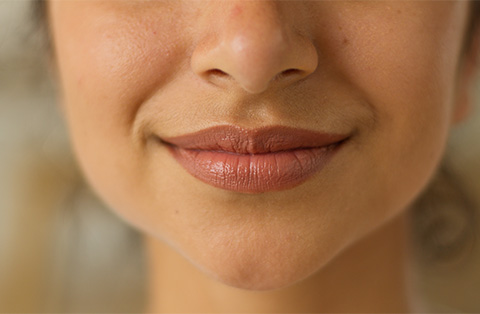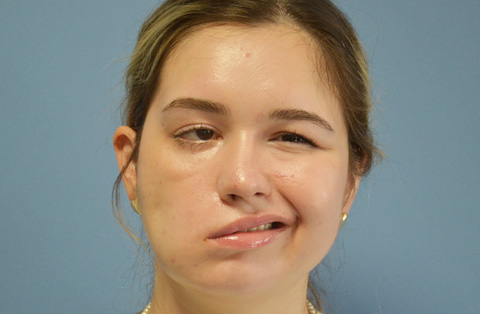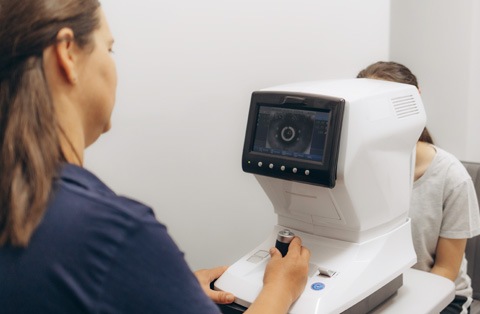Bell’s palsy causes sudden facial paralysis, affecting daily life. Early diagnosis and treatment improve recovery. Learn symptoms, causes, and the best treatment options for faster healing.
What is Bell's Palsy?
Bell's palsy is a sudden weakness or paralysis of the facial muscles, usually on one side of the face. It occurs when the facial nerve (cranial nerve VII) becomes inflamed or compressed.
This condition can cause drooping of the mouth, difficulty closing the eye, and changes in facial expressions. Most cases are temporary, with symptoms improving within weeks or months. The exact cause is unknown, but viral infections may play a role.
What are the early signs and symptoms of Bell's palsy?
The early signs and symptoms of Bell's palsy usually appear suddenly and reach their peak within 48 hours. The condition mainly affects one side of the face.
Common symptoms of bell palsy:
Sudden weakness or paralysis on one side of the face
Drooping of the mouth or eyelid
Difficulty closing the eye on the affected side
Loss of facial expressions
Drooling
Decreased sense of taste
Increased sensitivity to sound in one ear
Pain around the jaw or behind the ear
Dryness of the eye or mouth
These symptoms can range from mild to severe. Most people start to recover within a few weeks.
How Bell's palsy affects eye function
Bell’s palsy can significantly affect eye function due to weakness or paralysis of the facial muscles. The most common issue is the inability to fully close the eyelid on the affected side. This can lead to:
Exposure keratitis: The eye remains open, causing dryness and irritation.
Excessive tearing: The eye may produce more tears as a response to dryness.
Blurred vision: Dryness and irritation can affect vision clarity.
Risk of corneal damage: Without proper blinking, the cornea is exposed to dust and injury.
To protect the eye, artificial tears, lubricating ointments, and eye patches may be needed until facial function improves.
Distinguishing Bell's palsy symptoms from stroke
Bell’s palsy vs. stroke can both cause facial weakness, but they have key differences:
Bell’s Palsy
Affects only facial muscles on one side
Unable to close the eye on the affected side
Forehead is also affected, leading to a smooth, drooping appearance
No weakness in arms or legs
Speech and cognitive functions remain normal
Symptoms develop gradually over hours to days
Stroke
Can affect the entire body, including arms and legs
Forehead muscles are usually spared, meaning the person can still wrinkle the forehead
May cause difficulty speaking, confusion, or vision problems
Sudden onset of symptoms within minutes
Often accompanied by severe headache, dizziness, or loss of balance
If facial weakness appears suddenly, a stroke should always be ruled out immediately. Seeking emergency medical care is crucial.
Ramsay Hunt Syndrome vs. Bell’s Palsy
Both conditions cause facial paralysis, but their causes and symptoms differ. Bell’s palsy is linked to facial nerve inflammation, often due to a viral infection. It usually affects only facial muscles and resolves within weeks to months.
Ramsay Hunt syndrome is caused by the varicella-zoster virus (chickenpox/shingles). It not only leads to facial paralysis but also causes ear pain, hearing loss, and a rash near the ear or mouth. It tends to be more severe than Bell’s palsy and may require antiviral treatment along with steroids.
Further Reading: Ramsay Hunt Syndrome vs. Bell’s Palsy
What Causes Bell's Palsy?
The exact cause of Bell’s palsy is unknown, but it is believed to result from inflammation of the facial nerve (cranial nerve VII). This inflammation may be triggered by viral infections.
Possible Causes and Triggers
Viral infections: Common viruses linked to Bell’s palsy include:
Herpes simplex virus (cold sores)
Varicella-zoster virus (chickenpox, shingles)
Epstein-Barr virus (mononucleosis)
Cytomegalovirus
Influenza virus
Autoimmune response: The immune system may mistakenly attack the facial nerve.
Reduced blood supply: Swelling can compress the nerve, restricting oxygen and nutrients.
Cold exposure: Sudden exposure to cold weather may increase the risk.
Stress and weakened immunity: These can make the body more vulnerable to infections.
While these factors may contribute, not everyone exposed to them develops Bell’s palsy.
The role of facial nerve inflammation in Bell's palsy
Facial nerve inflammation plays a key role in Bell’s palsy. The facial nerve (cranial nerve VII) controls facial expressions, eyelid movement, tear production, and taste sensations. When inflamed, it becomes swollen and compressed within the narrow facial canal inside the skull.
Effects of Inflammation on the Facial Nerve
Nerve signal disruption: Weak or no signals reach facial muscles, causing paralysis or weakness.
Loss of muscle control: Drooping of the mouth, difficulty closing the eye, and loss of facial expressions occur.
Sensory changes: Taste disturbances and altered tear or saliva production may develop.
Recovery process: As inflammation subsides, nerve function gradually returns. In most cases, full recovery occurs within weeks to months.
The degree of inflammation determines symptom severity and recovery time. Early treatment can help reduce nerve swelling and improve outcomes.
Risk factors associated with Bell's palsy
Certain factors may increase the risk of developing Bell’s palsy. These include:
Viral infections: Herpes simplex, varicella-zoster, Epstein-Barr, and influenza viruses.
Diabetes: Higher risk due to nerve damage and impaired immune response.
Pregnancy: Especially in the third trimester or postpartum period.
Weakened immune system: Stress, illness, or autoimmune conditions may trigger nerve inflammation.
High blood pressure: Poor circulation can affect nerve function.
Family history: A genetic predisposition may exist in some cases.
Cold exposure: Sudden temperature changes might increase susceptibility.
While these factors increase risk, Bell’s palsy can still occur in otherwise healthy individuals.
Is Bell's palsy related to Lyme disease or pregnancy?
Bell’s Palsy and Lyme Disease
Lyme disease, caused by the bacterium Borrelia burgdorferi, can lead to facial nerve palsy. This condition, known as Lyme-associated facial palsy, mimics Bell’s palsy but is caused by an infection from a tick bite. Key differences include:
Lyme disease may cause bilateral facial paralysis, while Bell’s palsy usually affects one side.
Other Lyme symptoms include fever, joint pain, and a bull’s-eye rash.
Blood tests can confirm Lyme disease, requiring antibiotic treatment.
Anyone with facial paralysis and a history of tick exposure should be tested for Lyme disease.
Bell’s Palsy and Pregnancy
Pregnancy increases the risk of Bell’s palsy, especially in the third trimester or postpartum period. Possible reasons include:
Fluid retention and swelling, which may compress the facial nerve.
Immune system changes, making pregnant women more vulnerable to viral infections.
Increased blood pressure, which may affect nerve function.
Most pregnant women recover fully, but treatment options may be limited due to safety concerns for the baby.
How is Bell's palsy diagnosed by medical professionals?
Medical professionals diagnose Bell’s palsy through clinical evaluation and ruling out other conditions.
Steps in Diagnosis
Medical History
Sudden onset of facial weakness or paralysis
Recent viral infections, tick bites, or underlying conditions (diabetes, pregnancy)
Physical Examination
Facial symmetry, ability to close the eye, and movement of facial muscles
Checking for forehead involvement (forehead weakness suggests Bell’s palsy, while forehead sparing may indicate a stroke)
Neurological Examination
Assessing other cranial nerves and muscle strength in the arms and legs
Testing speech, vision, and coordination to rule out stroke or neurological disorders
Additional Tests (If Needed)
Electromyography (EMG): Assesses nerve function and severity of damage
Blood Tests: Checks for Lyme disease, diabetes, or infections
MRI or CT Scan: Rules out tumors, stroke, or other brain conditions
Key Diagnostic Feature
Bell’s palsy is a diagnosis of exclusion, meaning other possible causes must be ruled out before confirming the condition. Most cases are diagnosed based on clinical symptoms alone.
What are the most effective treatment options for Bell's palsy?
Most cases of Bell’s palsy improve on their own, but early treatment can speed up recovery and reduce complications.
Medical Treatments
Corticosteroids (Prednisone): Reduce inflammation and swelling of the facial nerve. Most effective when started within 72 hours of symptom onset.
Antiviral Medications (Acyclovir, Valacyclovir): Sometimes prescribed if a viral infection is suspected, though their benefit is unclear.
Pain Relievers (Ibuprofen, Acetaminophen): Help manage facial pain or discomfort.
Eye Protection
Artificial tears and lubricating ointments: Prevent dryness and corneal damage.
Eye patch or tape at night: Keeps the eye closed during sleep.
Protective glasses: Shield the eye from wind and debris.
Physical Therapy and Exercises
Facial exercises: Help maintain muscle tone and prevent stiffness.
Massage and warm compresses: Improve circulation and relieve tension.
Other Treatments
Botox Injections: Used in long-term cases to relax tight facial muscles.
Surgery (Rarely Needed): Facial nerve decompression is rarely recommended due to risks.
Most people recover within weeks to months. Early treatment improves the chances of full recovery.
Can Bell's palsy be prevented or recur?
Can Bell’s Palsy Be Prevented?
There is no guaranteed way to prevent Bell’s palsy, but reducing risk factors may help:
Manage viral infections: Treat cold sores, flu, or other viral illnesses promptly.
Control underlying conditions: Keep diabetes and high blood pressure well-managed.
Boost immune health: Maintain a balanced diet, exercise, and reduce stress.
Protect against cold exposure: Sudden temperature changes may trigger symptoms.
Can Bell’s Palsy Recur?
Yes, Bell’s palsy can recur, but it is uncommon. Recurrence rates are around 7-15%. Risk factors for recurrence include:
Family history of Bell’s palsy
Uncontrolled diabetes or hypertension
Repeated viral infections
Incomplete recovery from a previous episode
If Bell’s palsy happens multiple times, further tests may be needed to rule out other neurological conditions.
What is the typical recovery process for Bell's palsy patients?
Most people with Bell’s palsy start improving within two to three weeks, with full recovery occurring in three to six months. The recovery timeline depends on the severity of nerve damage.
Stages of Recovery
First Few Weeks
Initial weakness or paralysis reaches its peak.
Mild cases may show early signs of improvement.
Weeks 3–6
Muscle movement gradually returns.
Facial expressions start improving.
Months 3–6
Most patients regain full function.
Some may have mild residual weakness or stiffness.
Long-Term Recovery (Rare Cases)
About 10-15% of patients may have lingering symptoms, such as slight facial asymmetry or muscle twitching.
Physical therapy and Botox injections can help manage long-term effects.
Factors Affecting Recovery
Early treatment with corticosteroids improves outcomes.
Severe nerve damage may prolong recovery or lead to incomplete healing.
Younger patients tend to recover faster.
Most patients regain normal facial function, but ongoing care may be needed for those with lasting effects.






